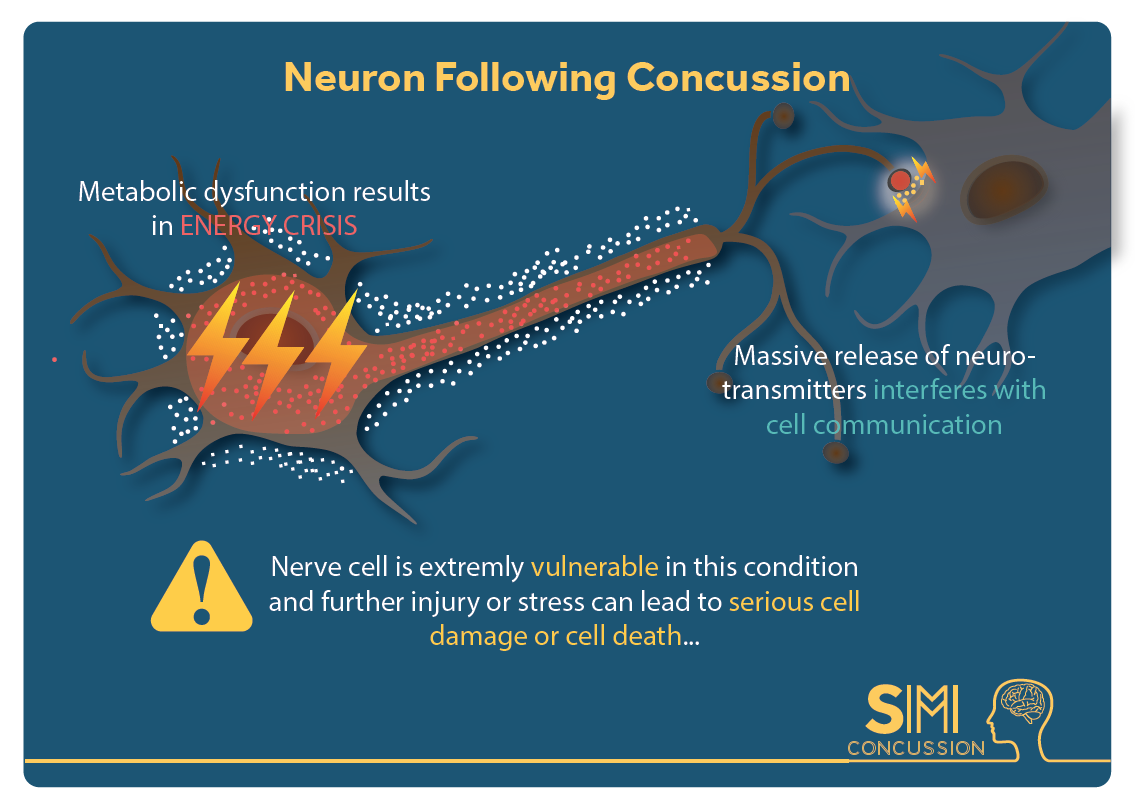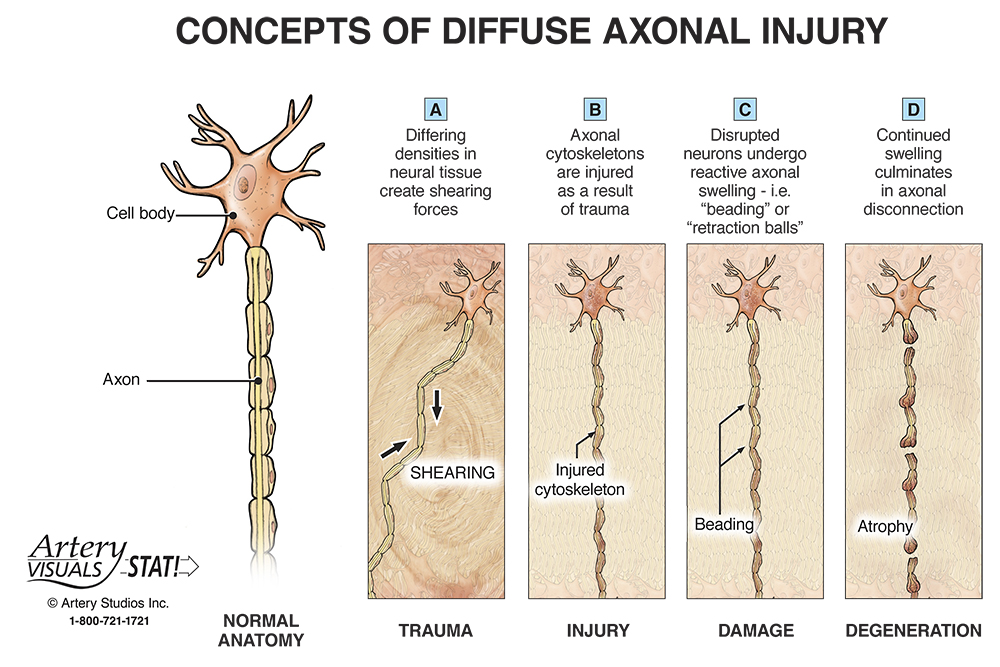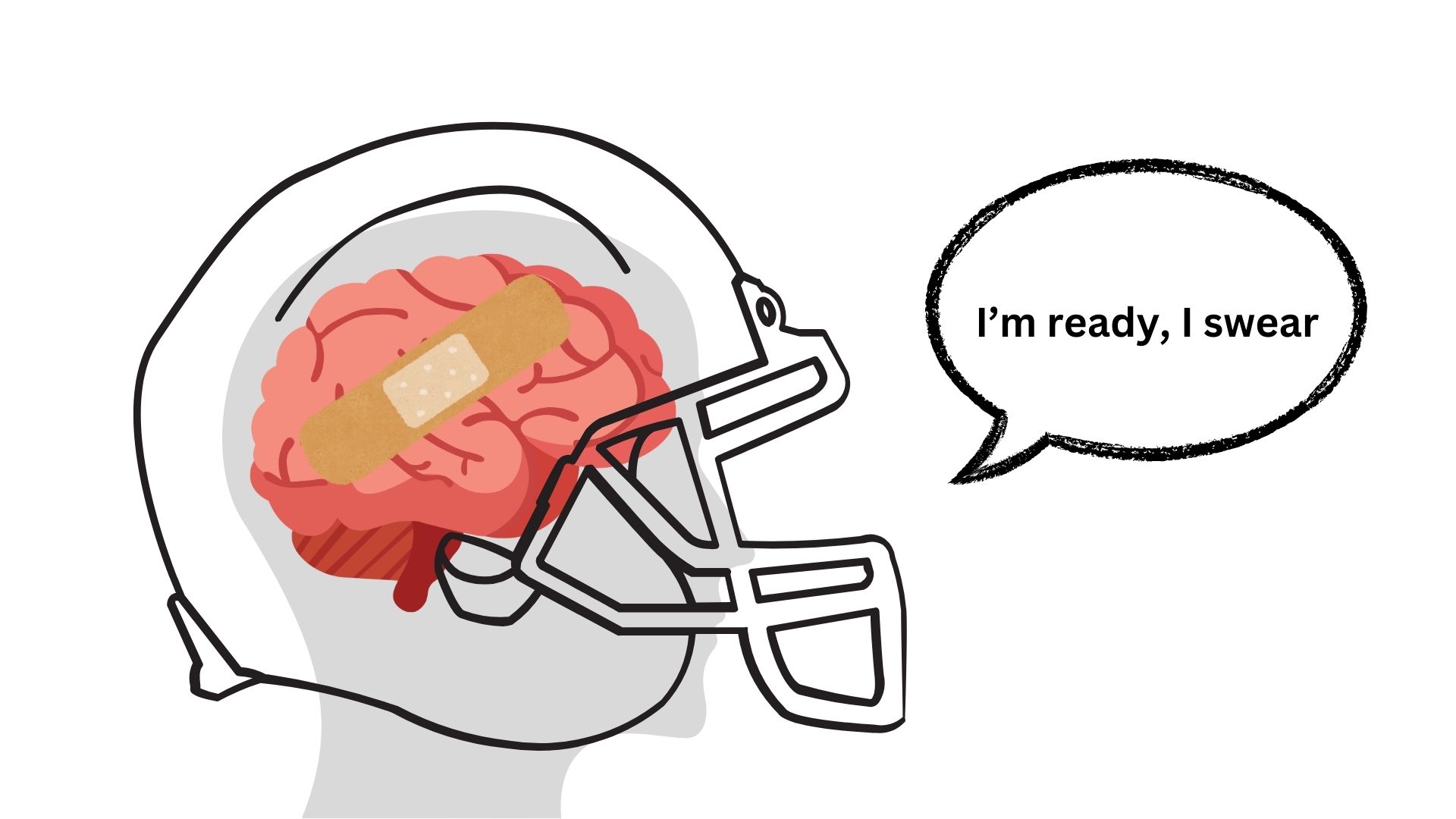Traumatic Brain Injuries
Concussions are brain injuries that happen when your head is hit and can affect the way the brain works. Symptoms include headaches, hypersensitivity, and problems with learning and sleep. Most concussions in kids happen while playing sports, but they can also happen in a car accident, a fight, or a fall. In the medical world, concussions are known as mild traumatic brain injuries (mTBIs) and while they may be labeled as “mild,” the effects are anything but, making it an important topic for the public to take seriously. Concussions are being looked at with increasing concern for long-term impairment caused by chronic altered neurotransmission, an energy crisis, and axonal dysfunction.

Figure 1. An interesting article titled “A Gray Matter” by the NCAA regarding concussions in athletes (2).
To understand the symptoms, let’s take a closer look at the neurochemical events that occur right after a concussion. Functionally, concussions cause ionic shifts, hypometabolism, and impaired neurotransmission. These changes cause a neurometabolic cascade, leading to acute responses and chronic dysfunction.

Figure 2. The neurometabolic cascade that occurs following a concussion highlights the simultaneous impact of ionic flux, the energy crisis, and axonal injury on neurotransmission (1).
Altered Neurotransmission
When the injury occurs, the membrane gets leaky, and too much calcium ions come into the cell which causes an imbalance. The neurotransmitter glutamate also gets released in excess, this triggers the cell to depolarize and diffuse a “spreading depression-like” state. The way ionic flux contributes to migraine symptoms of concussions is in the hyperacute release of glutamate which can lead to excitotoxicity. Changes in NMDA receptor activity and excitatory/inhibitory imbalances cause altered neurotransmission post-concussion.
In the immature brain, metabolic changes are short-term, but axonal vulnerability may last longer. TBIs to immature brains are more vulnerable to long-lasting deficits in learning and memory because of the loss of experience-dependent plasticity.
Energy Crisis
Simultaneously in an effort to restore the ionic imbalance and return to homeostasis, an energy crisis occurs as the ATP-driven sodium/potassium ion pump becomes overactive. This causes hyperglycolysis, which is when there is an increase in glucose levels to support reduced blood flow and brain function (or healing in the case of concussions), and depleted intracellular energy (ATP) reserves. This shortage of ATP causes hypometabolism.
Because there is an increase in calcium coming into the cell, the mitochondria takes up excess as a short-term solution. The amount of calcium being taken into the cell for extended periods leads to mitochondrial dysfunctions and problems with oxidative metabolism.
Energy Crisis and Vulnerability to a Second Injury
The risk of a second concussion is the greatest in the first 10 days postinjury because of the ongoing energy crisis trying to heal your brain. The timing of repeat injuries has significant consequences on symptomology and long-term impacts as well.

Figure 3. The Energy Crisis is why the brain is so vulnerable to a second TBI injury (3).
Axonal Dysfunction
The force of the concussion also results in damage to microstructural components of neurons, like the axons and dendrites. The biomechanical stretch of axons disrupts microtubules, and the calcium influx causes neurofilaments to collapse, compromising axonal integrity and impairing neurotransmission. Axonal dysfunction in mTBIs often results in damage to white matter tracts, which are bundles of axons that connect different brain regions. While mTBIs are considered “mild,” the cumulative effects of repeated axonal dysfunction can have long-term consequences, especially in immature brains.
The impaired cognitive functioning and slowed reaction times observed in individuals with concussions could be from slower conductance, damage to cerebral networks, or impaired neurotransmission. One aspect that needs to be studied further is whether damaged axons can recover fully and if neurons can survive after axonal disconnection. This issue is particularly problematic in cases of repeat mTBIs where insufficient time for recovery between injuries, immature myelination, or genetic vulnerabilities may increase the risk of long-term effects.

Figure 4. The different types of axonal injuries that are experienced post-concussion (4).
Chronic Dysfunction: A Lingering Impact
The occurrence of repeat mTBIs before your brain is fully recovered can cause long-lasting metabolic changes because chronic energy crises trigger protease activation and cell death, leading to brain atrophy. Altered protein degradation after mTBIs can lead to the accumulation of toxic proteins like tau.
I Have a Concussion… What Now?
Rest and let your brain heal!
ARTstract created by Kate Loidolt on canvas depicting the pressure of returning to sports after a concussion.

